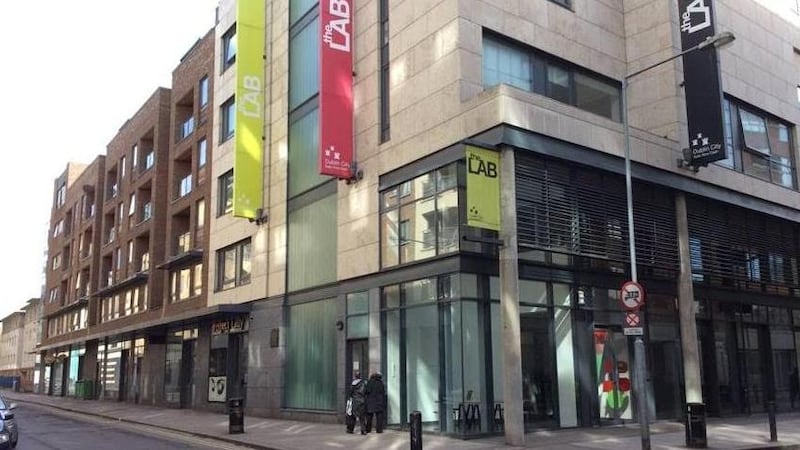The woozy sexual dream world of the Circe episode in James Joyce's Ulysses opens up just off Dublin's Talbot Street, at "the Mabbot street entrance of nighttown, before which stretches an uncobbled tramsiding set with skeleton tracks, red and green will-o'-the-wisps and danger signals. Rows of grimy houses with gaping doors".
These days, this gateway to depravity is named James Joyce Street, but that's the only trace left of Nighttown, the name Joyce gave to the notorious red-light district between Amiens Street and Gardiner Street. The brothels were cleared out in the 1920s, with Georgian tenements and hovels replaced by council flats and Catholic institutions (including what would become Dublin's last Magdalene laundry). In the boom years, a new wave of development tore through the area, which is why James Joyce Street looks this way now: a canyon of blank-faced office and apartment blocks, devoid of charm with little sign of life at street level.
A new project funded by the Arts Council’s Open Call Awards scheme (see panel) aims to highlight the street’s Joycean connections while also creating a more joyous environment for the people who live and work there.


‘City forestation’
Inspired by the “city forestation” carried out by German artist
Joseph Beuys
during the early 1980s in the German city of Kassel, and by the “marriage of trees” in the Cyclops episode of
Ulysses,
the project, led by
Oonagh Young
and
Mary Cremin
, will change the existing streetscape significantly. Trees and plants will be selected by community groups from indigenous species referenced in
Ulysses.
"We'll be working very closely with Dublin City Council and hopefully the planting will be very different from the usual," says Young, who has run an art gallery on the street for several years. "It won't all be the same trees. I wanted to link it very closely to Joyce because of the episode set here but also because of the list of indigenous trees in Cyclops. Of course some of them won't be suitable for an urban environment. But yes, I'd love to see this all green, with places for people to sit down."
Young describes the current street as characterless.
“It’s all designed around keeping people out, making sure they can’t loiter,” she says. “Nobody can put their bag down anywhere. It’s designed out of fear at what’s going to happen in this area, and that’s problematic.”
As part of the project, a summer season of events will take place in an experimental temporary structure in the adjoining Liberty Park, with a programme devised by the local residential and working community.
“Seventy per cent of Dublin 1 is non-Irish,” says Young. “That’s amazing, but you don’t see it reflected on the street. There’s no visibility. People go in and out of their apartments but there’s no engagement. A lot of the people working in the offices just run into work and run straight home.
New writers
“We’re going to take a whole year before we plant anything. We’ll turn the gallery into a kind of a shed where all the different communities can have some kind of ownership of what’s happening.”
An electronic "ticker tape" display will run text from Ulysses, as well as promoting work by new writers. But with nothing left of the world described in Ulysses, is there really anything here for Joyce readers to see?
“I don’t think it should be as literal as that, because Joyce isn’t as literal as that,” Young says. “He was such a modernist, if you bring it back to the text and to the actual words, that can be exciting.”












